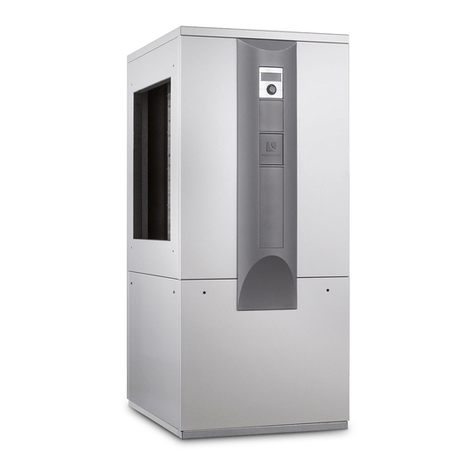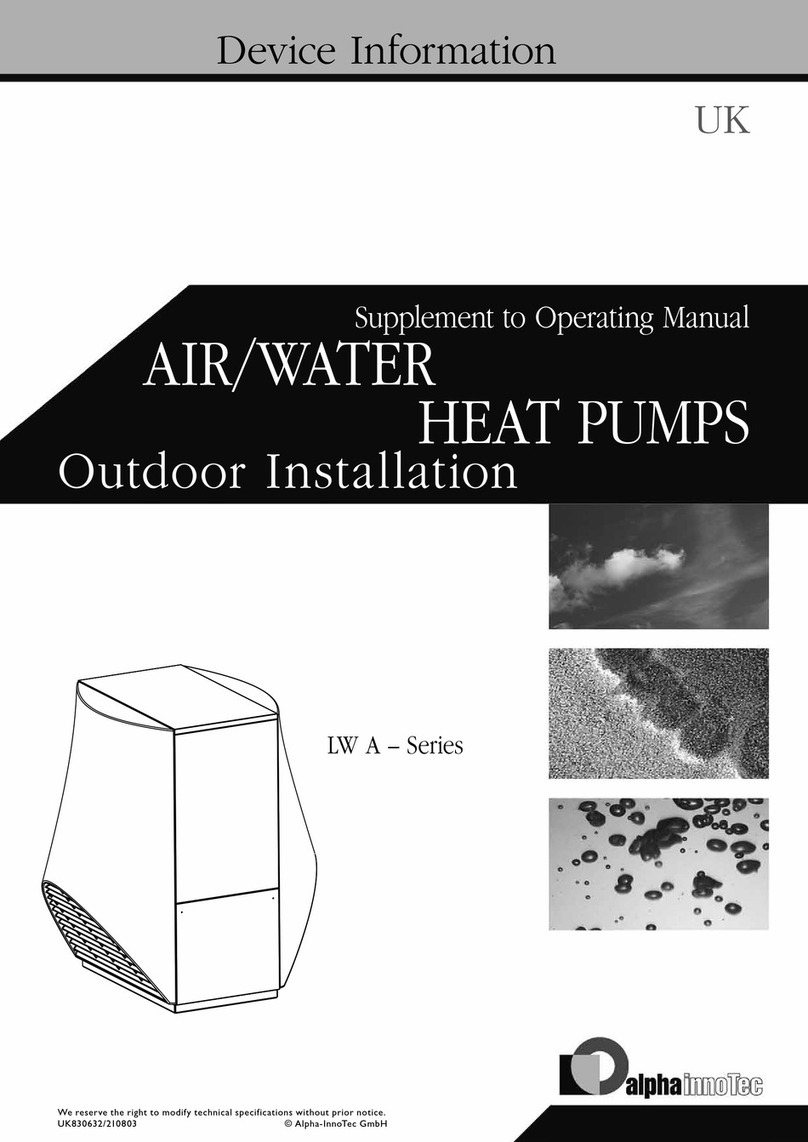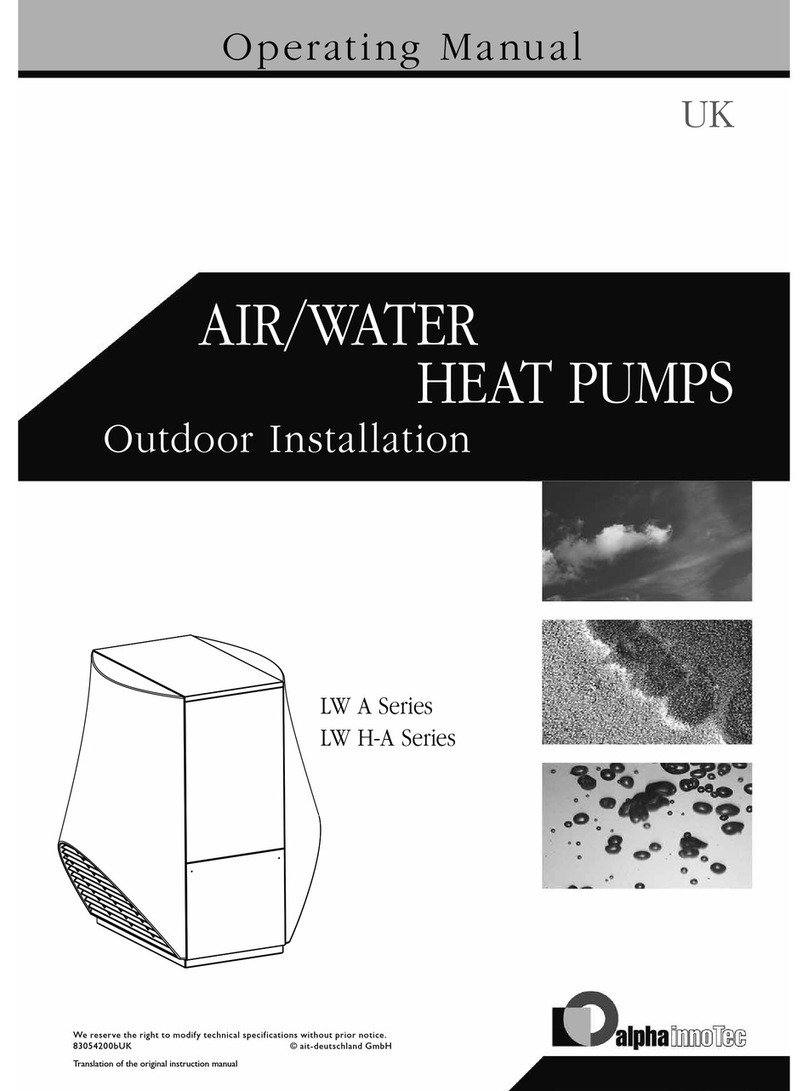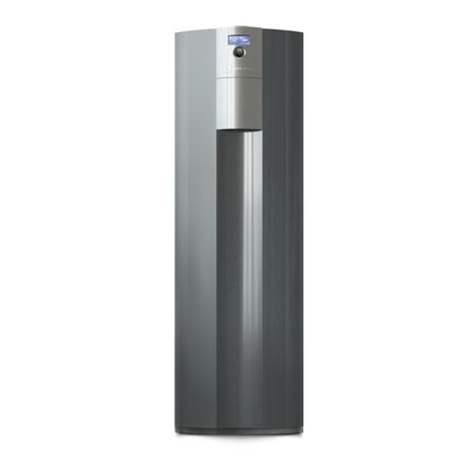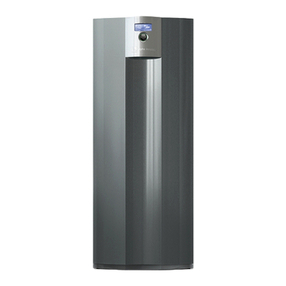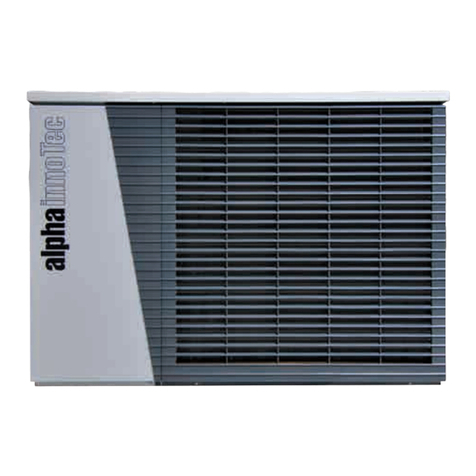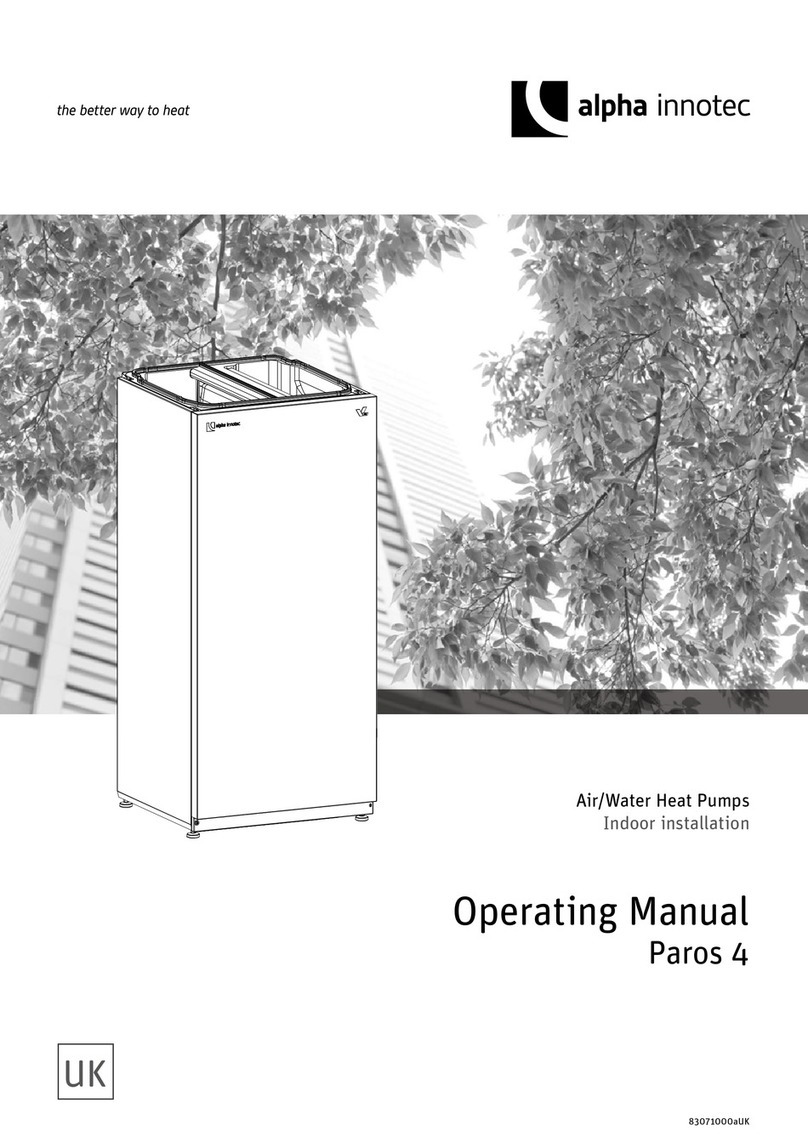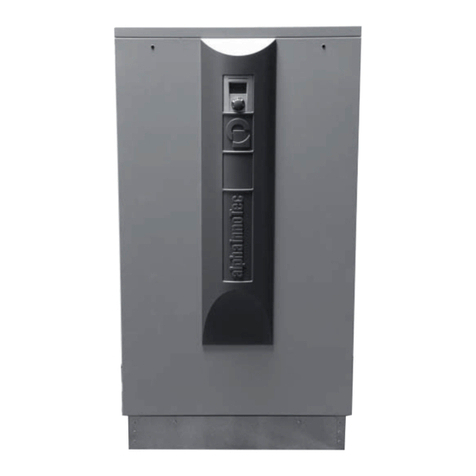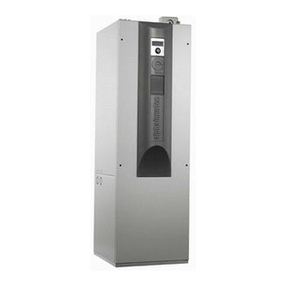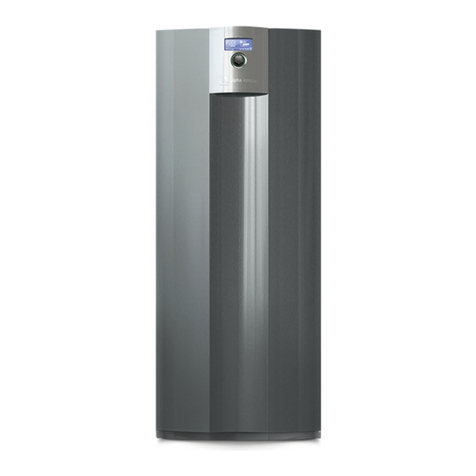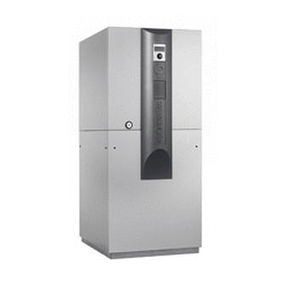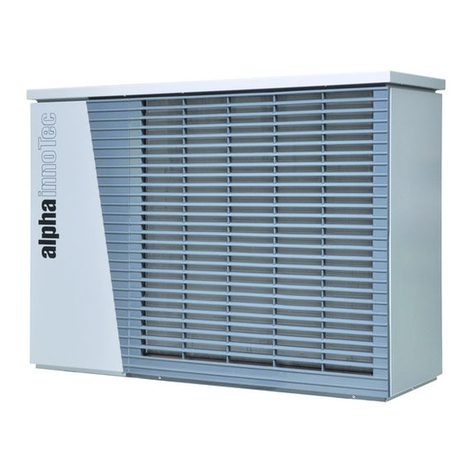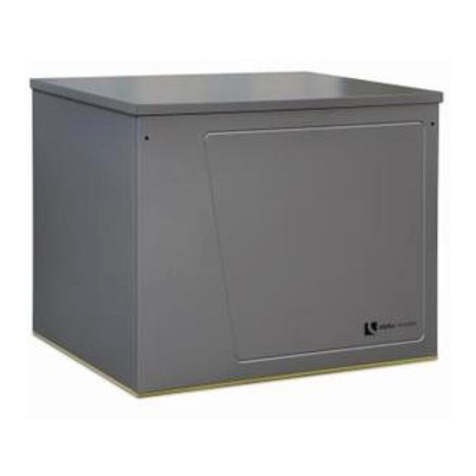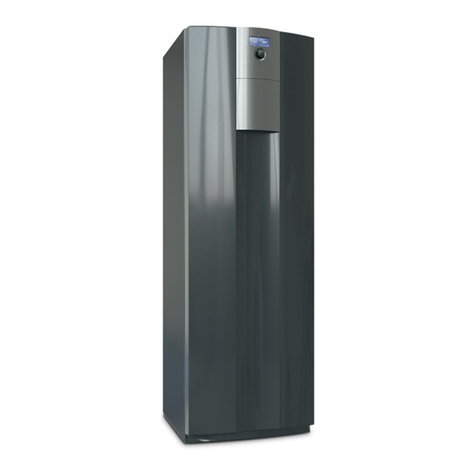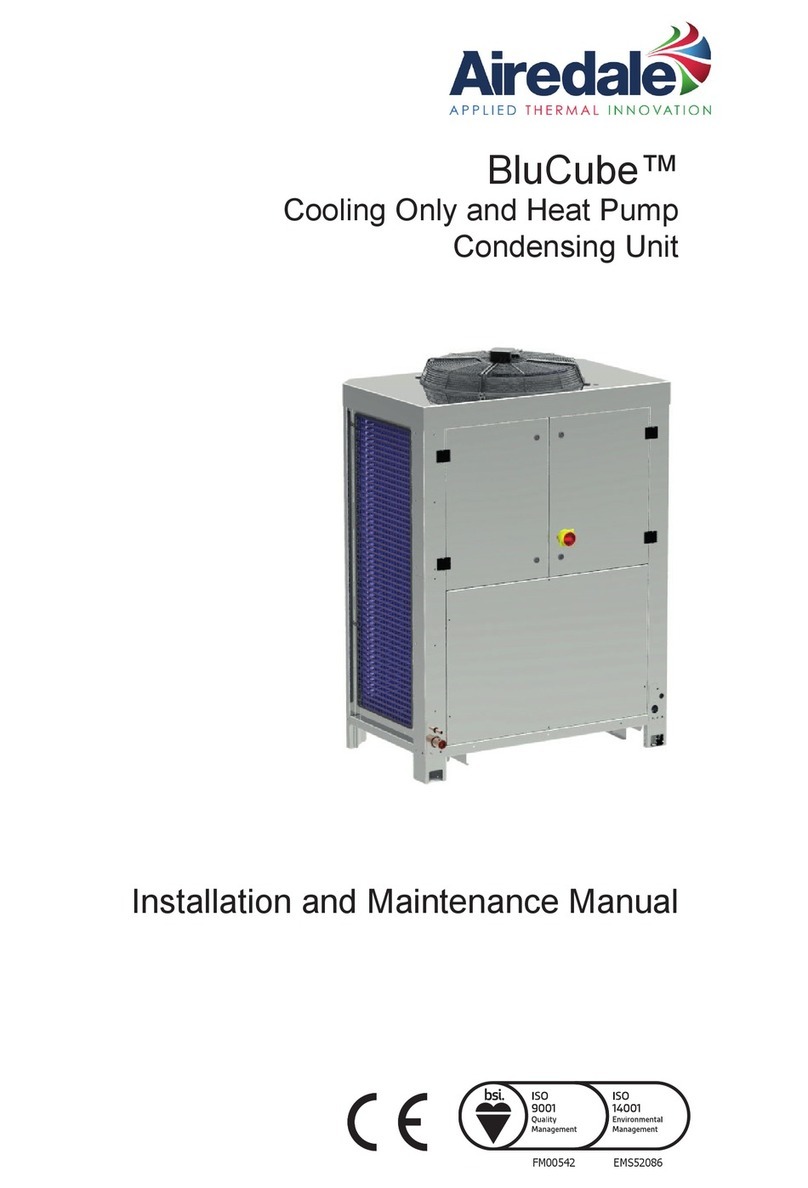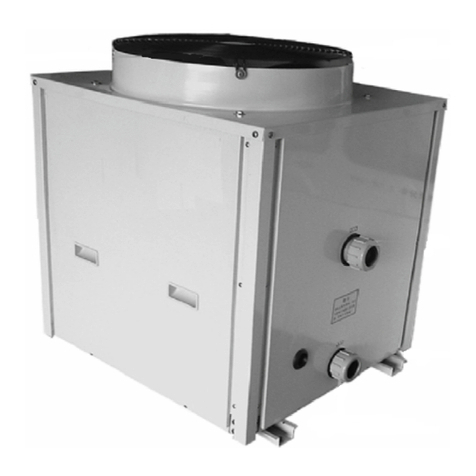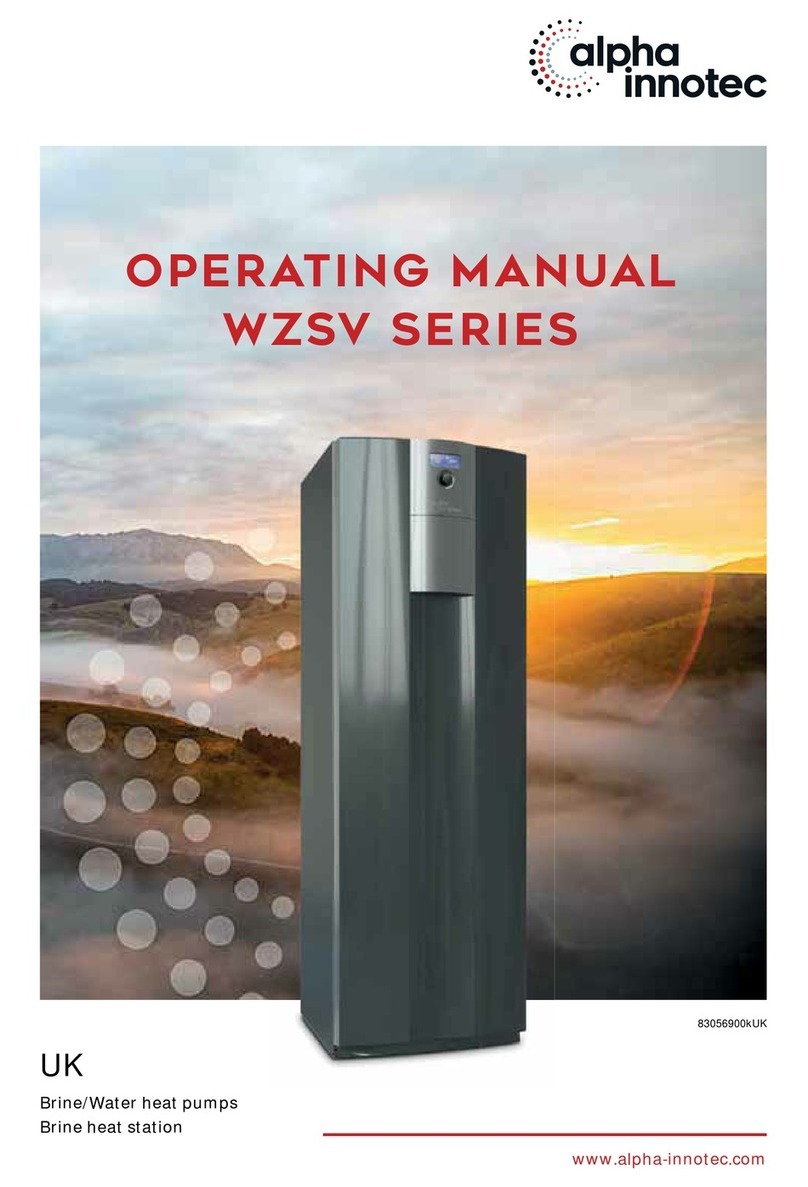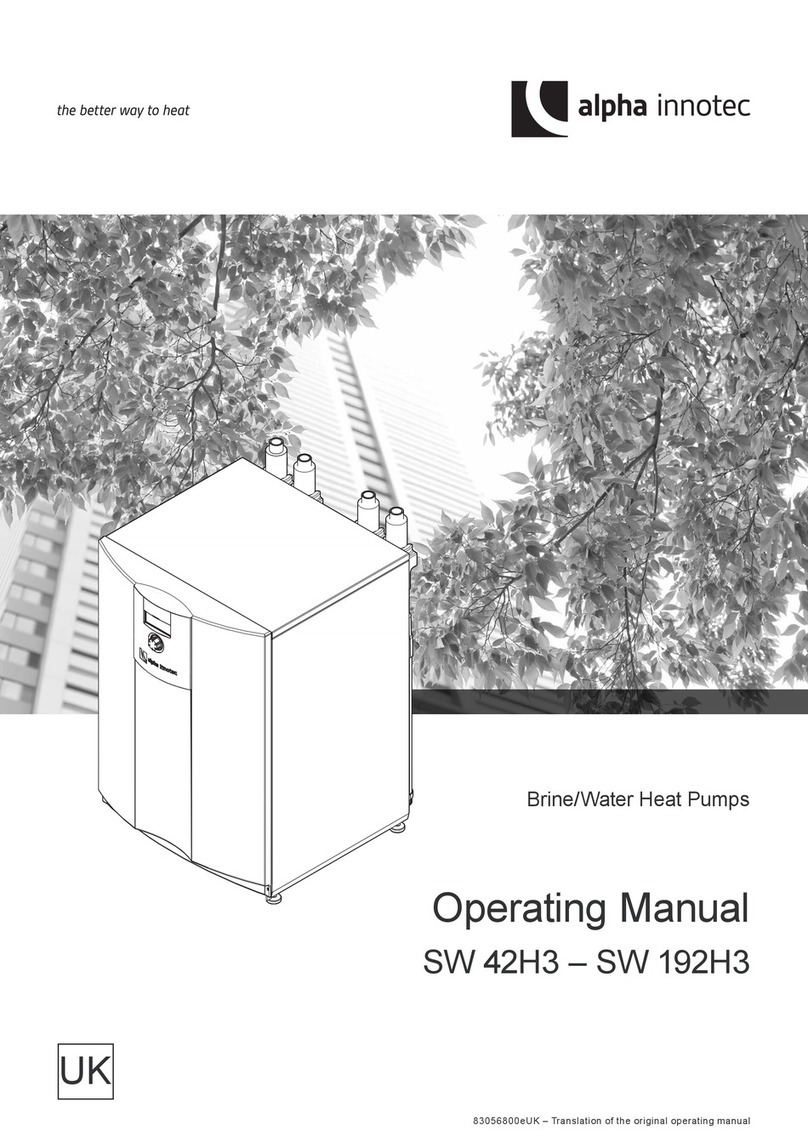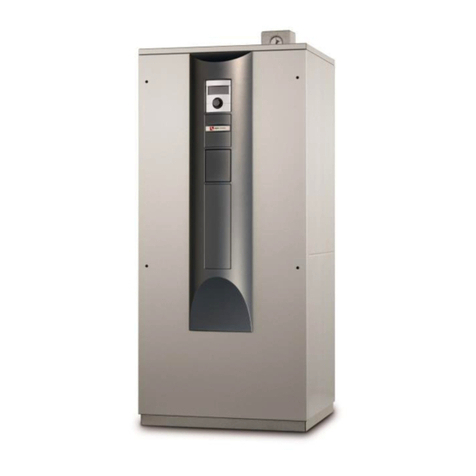3
Contents
INFORMATION FOR OPERATORS
ANDQUALIFIED SPECIALISTS
PLEASE READ FIRST..................................................................2
SYMBOLS .....................................................................................2
INTENDED USE..........................................................................4
DISCLAIMER................................................................................4
EC CONFORMITY .....................................................................4
SAFETY AND SECURITY..........................................................4
CUSTOMER SERVICES ..............................................................5
WARRANTY / GUARANTEE ....................................................5
WASTE DISPOSAL .....................................................................5
INFORMATION FOR OPERATORS
OPERATING PRINCIPLE OF HEAT PUMPS ...........................6
AREA OF UTILISATION............................................................6
HEAT QUANTITY RECORDING............................................6
OPERATION ................................................................................6
CARE OF THE UNIT..................................................................7
MAINTENANCE OF THE UNIT...............................................7
Cleaning and Flushing unit components............................7
MALFUNCTIONS.......................................................................8
INSTRUCTIONS FOR QUALIFIED TECHNICIANS
SCOPE OF DELIVERY ................................................................9
INSTALLATION AND ASSEMBLY.........................................10
Installation location............................................................10
Transport to installation location....................................10
Installation............................................................................10
Attaching the air flow baffles............................................13
Installation / connection to heating circuit ....................15
Condensate discharge........................................................16
PRESSURE RELIEF.....................................................................16
SEPARATING BUFFER TANK.................................................16
CIRCULATING PUMPS ...........................................................16
WATER HEATING ....................................................................17
HOT-WATER TANK.................................................................17
ELECTRICAL CONNECTIONS .............................................17
FLUSHING, FILLING AND BLEEDING THE SYSTEM.......19
INSULATING THE HYDRAULIC CONNECTIONS ..........19
COMMISSIONING ...................................................................20
DISMANTLING .........................................................................21
TECHNICAL DATA / SCOPE OF DELIVERY ........................22
PERFORMANCE CURVES
Heating capacity/COP / power consumption /
Heat pump pressure loss
Heating LW 90A/RX ..........................................................24
Cooling LW 90A/RX ..........................................................25
Heating LW 140A/RX.........................................................26
Cooling LW 140A/RX ........................................................27
SOUND PRESSURE LEVEL......................................................28
INSTALLATION PLANS
LW 90A/RX… .....................................................................30
LW 140A /RX .......................................................................31
HYDRAULIC CONNECTION
Hydraulic legend..................................................................32
Domestic hot water ...........................................................33
Swimming pool ....................................................................34
TERMINAL DIAGRAMS
LW 90A/RX • 140A/RX .....................................................36
Comfort board....................................................................37
CIRCUIT DIAGRAMS ..............................................................38
APPENDIX
EC DECLARATION OF CONFORMITY..............................41
GENERAL CHECKLIST ...........................................................43
COMPLETION REPORT FOR HEAT PUMP SYSTEMS ......45
CUSTOMER SERVICES
Addresses in the event of a service call..........................46
We reserve the right to modify technical specifications without prior notice.
83051400aUK © Alpha-InnoTec GmbH
